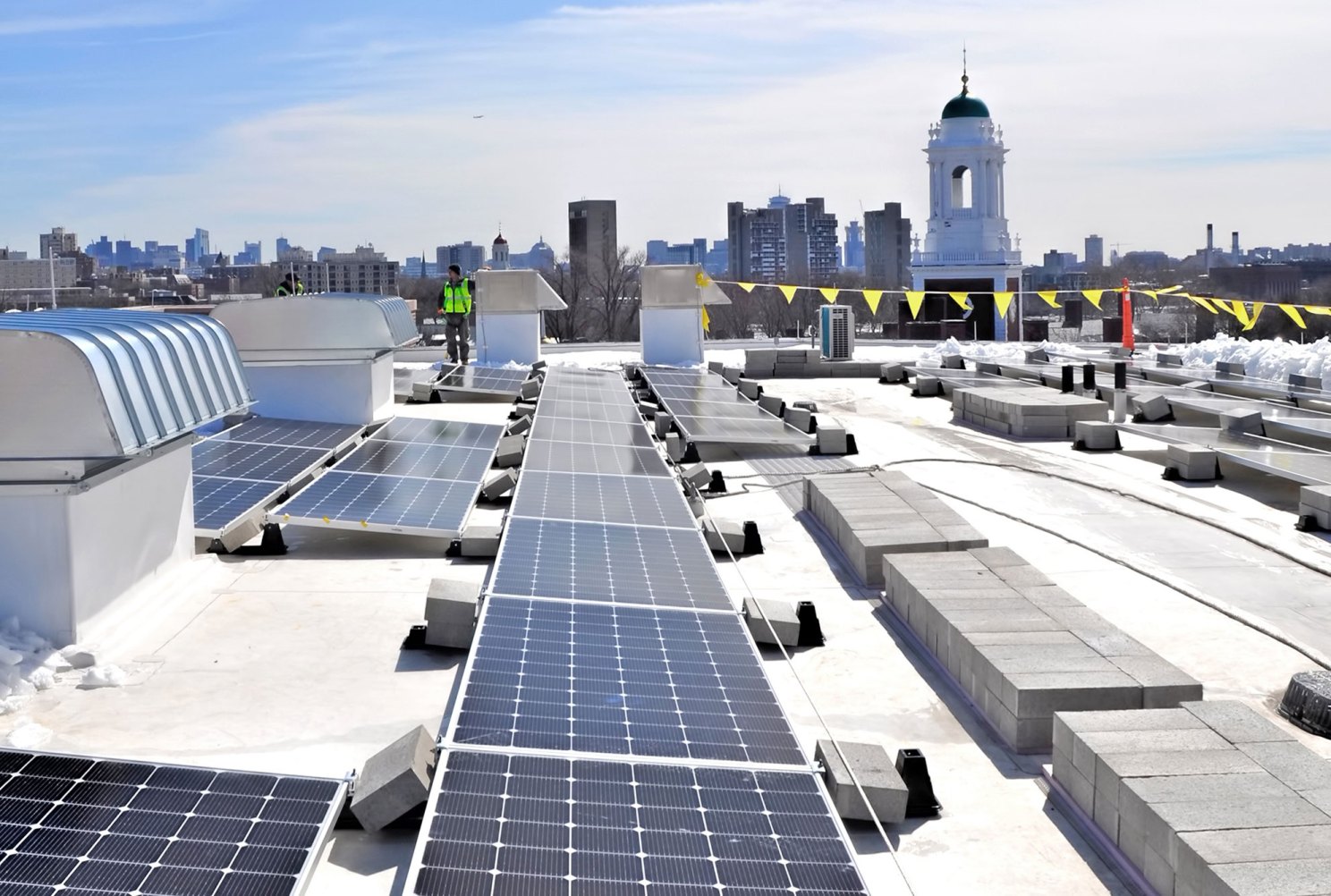Harvard Expands Green Revolving Fund to support campus decarbonization

Solar panels on the Wexner Building at Harvard Kennedy School.
Harvard has increased the size of its Green Revolving Fund (GRF) from $12 million to $37 million, providing additional funds to Harvard’s Schools and Business Units to accelerate campus decarbonization and move the University closer toward its goal to be Fossil Fuel-Free by 2050 and meet city building emissions reduction regulations.
Established in the 1990s as an interest-free loan for energy efficiency and innovative sustainability projects, the GRF grew into a $12 million fund managed by the Harvard Office for Sustainability in partnership with Harvard Office of Treasury Management (OTM). The GRF has provided capital to projects that improve energy efficiency and reduce operational impacts or bring sustainability innovation to campus.
The new $37 million GRF has been expanded to support the projects Harvard’s operations and capital project teams are focused on based on guidance from the Office for Sustainability. Priorities are to 1) accelerate additional energy efficiency, especially heat/energy recovery and load reduction, in all buildings; 2) replace fossil fuel equipment with electric technology at end-of-life, whenever possible; and 3) when renovating space or changing HVAC systems or equipment, design the equipment to use low temperature hot water for future flexibility. The GRF allows Schools and Units at Harvard to apply for a zero-interest loan and pay back the principal over up to 10 years.
Harvard was one of the first universities to have a large revolving fund, serving as a model adopted and scaled by the Sustainable Endowments Institute, a nonprofit organization to advance sustainability in operations and endowment practices. More than 200 projects across 25 departments at Harvard have used funding from the GRF since its inception. The revolving fund has provided $43 million in funding since 2002 and saved $110 million in that period. It played a key role in the University achieving its initial 2016 climate goal, which reduced net emissions by 30 percent against a 2006 baseline.





